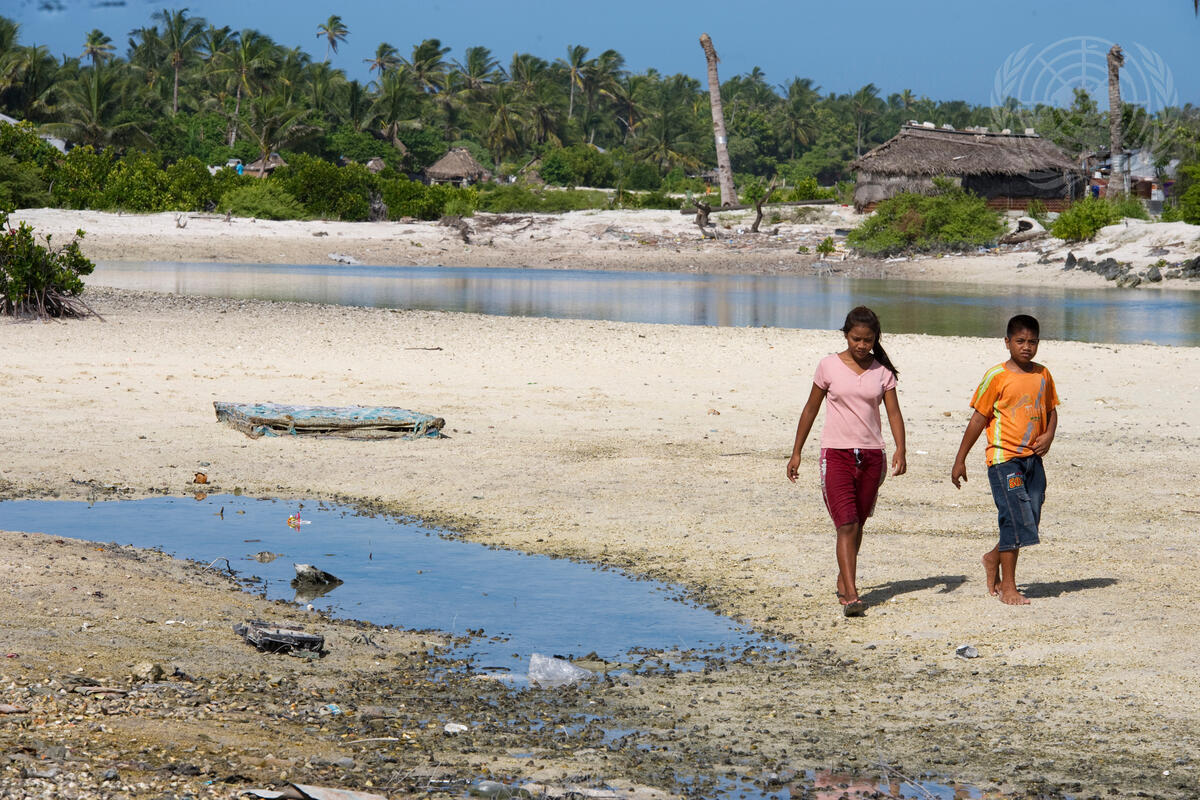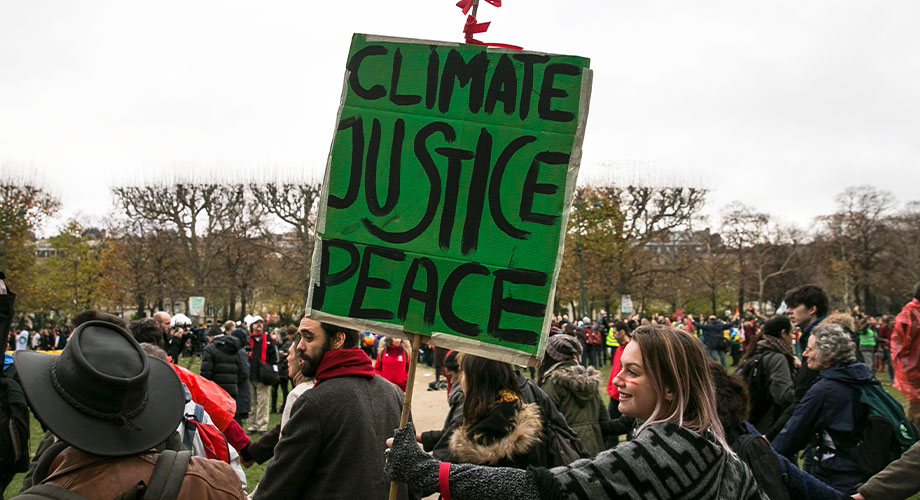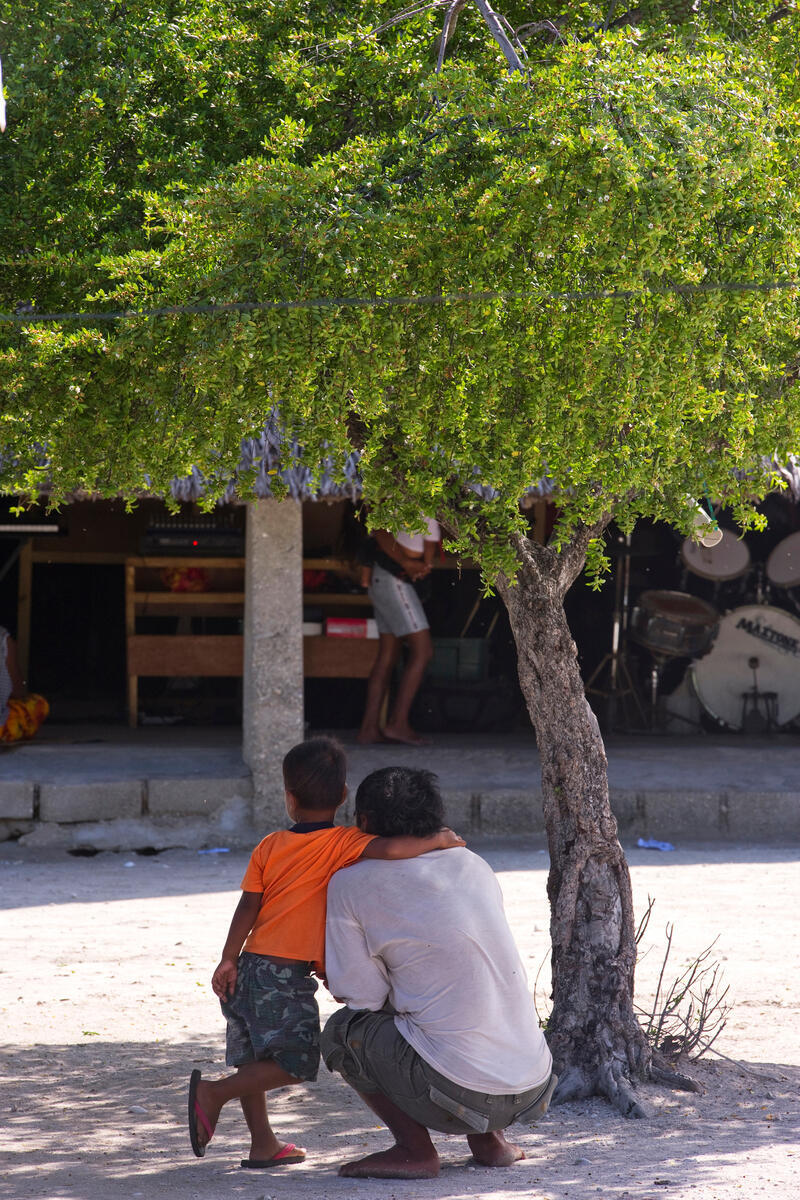Climate change, human rights and microfinance: lessons learned from the Pacific Islands

Table of Contents
- Climate change: a human rights issue
- Microfinance: a tool to meet individuals’ human rights and foster climate change adaptation
- The case of the Pacific Islands
- Conclusions
For many individuals around the globe, climate change is already a matter of life or death. Although nowadays an increasing awareness and undeniable scientific recognition surround this topic, the efforts implemented to tackle global warming have often been neither globally homogeneous nor resolute enough. Internationally speaking, through the United Nations Framework Convention on Climate Change (UNFCCC), different degrees of commitment has been established mainly to mitigate its root causes. Lower attention has been instead dedicated to adaptation strategies and to the poor and rural households perspectives, where adapting signifies surviving. Adaptation in developing countries, however, encounters several challenges, including the lack of financial resources of poor individuals themselves. This analysis thus explores the role of microfinance in helping them meet their basic rights and, at the same time, better deal with the already visible consequences of climate change.
Climate change: a human rights issue

Estimations find climate change causing 300,000 deaths and affecting the lives of 300 million people all over the world each year. The related spread of diseases, lack of freshwater, lower agricultural productivity and increase in number and intensity of extreme weather events are severely putting at risk the enjoyment of individuals’ most basic human rights. Above all, climate change strongly exacerbates the already existing difficulties for the most fragile ecosystems on the planet and for the people living in them, who, incidentally, are also the ones contributing the least to the drastic increase of GHGs emissions. The international community, with two Human Rights Council landmark resolutions, formally recognized, in 2008 (Res. 7/23), climate change as a threat to the enjoyment of human rights, and in 2009 (Res. 10/4) the role of human rights promotion in informing and strengthening international and national action to counter climate change. Despite such global awareness, so far, no universal human rights document establishes a specific right to a safe and healthy environment; similarly, the status of those migrants who are forced to leave their homes because of the adverse consequences of climate change is still not formally protected. Yet, a step forward has been taken in January 2020 by the UN Human Rights Committee which ruled, in Ioane Teitiota v. New Zealand, in favour of the application of the principle of non-refoulment for those refugees fleeing from the effects of the climate crisis.
Microfinance: a tool to meet individuals’ human rights and foster climate change adaptation
Since its emergence in the 70s, microfinance has been mainly studied as a poverty reduction tool. Quite recently, however, an emerging branch of literature has recognized the basic characteristics of microfinance as potentially suitable also for financing and strengthening the adaptation of households to climate change. In fact, microfinance institutions (MFIs) target those individuals who are highly vulnerable to climate change, living in some of the poorest and most affected areas of the globe, strongly relying on agricultural or farming activities and enjoying limited social safety nets and risk mitigation infrastructures. Furthermore, contrary to the much more widespread international or national-level narrative on climate change counter-action, MFIs pay direct attention to households and individuals, those who eventually struggle to autonomously adapt.
Trying to understand how and to what extent microfinance plays a positive role in boosting the climate change adaptation of households, new perspectives point out that microfinance positively affects adaptation processes in different ways. First of all, traditional microfinance services and products, namely microcredit, saving schemes and microinsurance, help individuals to build, diversify and manage their assets, smooth their consumptions, insure against risks, save their money for future times of distress and strengthen self-confidence and self-empowerment. In such a way, although not specifically addressing climate change adaptation, traditional microfinance products affect poor individuals’ livelihoods and development and, in turn, contribute to reducing their overall vulnerability to external shocks, including climate-related ones, while increasing their resilience and adaptive capacities.
However, the role of microfinance is not limited to an indirect influence. In fact, in light of the growing incidence of climate change disasters, MFIs have developed a more ‘adaptation-oriented microfinance’ as a way to protect both themselves and their clients. Since the late 90s, following the example of Grameen Bank, many MFIs have started to reshape their traditional products in terms of flexibility and, when possible, bundling them with concrete adaptation activities. As concern microcredit, many institutions now allow clients to renegotiate their loan contract terms when encountering difficulties in paying back the established amount because of climate-related events. Providing the possibility of rescheduling the instalments-repayment or of reducing their amount, MFIs prevent individuals from falling into serious poverty and indebtedness or from redirecting to riskier moneylenders only to fulfil the contract. Furthermore, loans provide an optimal chance for an adaptation-oriented bundled product. For instance, in the aftermath of a natural disaster, obtaining a house-rebuilding loan might be made conditional to the use of a hazard-resistant way of construction, sometimes even with material and design specification, like the use of stilts in flood-prone areas. Similarly, agricultural loans might be linked to a change in the client’s business activity, like a shift to a more long-term drought-resistant crop (ex. from rice cultivations to sunflowers, maize or groundnuts that require lower amounts of water), the usage of more water-efficient irrigation systems or different cultivation techniques. Saving schemes have also been adjusted to show a greater degree of flexibility in case of climate change-related disasters, particularly by allowing poor individuals to get access to their savings more quickly and when in real need, and by removing the compulsory weekly deposit in cases of distress, replacing the traditional structure with a more personal passbook saving account.
Lastly, if traditional microinsurance products protecting individuals from perils such as death, hospitalization, livestock losses or crop failure have already presented several challenges related to the poor’s high exposure to risks and low financial managerial skills, these challenges are further exacerbated by climate change. In this regard, weather index-based insurance represents a quite successful example of reshaped MFIs products, effectively offsetting losses (particularly in the agricultural field), providing post-disaster liquidity and a chance to immediately recover. Differently from the traditional one, in fact, index-based insurance indeed links the payments of the indemnity to the realization of a pre-established index, in this case weather-related, such as cumulative rainfall, cumulative temperature, flood level or wind speed, measured by the closest weather station. Payouts are disbursed when the value of the index observed over a certain period of time falls below or exceeds a fixed threshold, i.e. when the chosen variable, like rain, implies a loss or damage for the client. Such a transparent and easy mechanism avoids the normal insurance risks of moral hazard and the difficulties deriving from on-site and individualised loss assessments. However, being index-based insurance of quite recent development, it is still not provided by all MFIs and presents, at the same time, some limitations linked with the many uncertainties related to climate shocks.
Overall, microfinance, by providing access to basic financial services and climate-tailored products, allows individuals to meet their basic needs while being active agents of their own adaptation process. Although successful examples come from countries like Bangladesh, India, Ethiopia and Kenya, this field still requires improvements and further outreach among both clients and MFIs. Greater attention should be perhaps dedicated to preventive adaptation strategies rather than reactive ones in order to better avoid irreversible damages and to increase the sustainability of products like insurances. Non-financial instruments shall also be strengthened, given their significant role in shaping poor individuals’ understanding of climate threats and of the possible and affordable adaptive solutions.
The case of the Pacific Islands

Pacific Islands are among the most vulnerable territories on the planet in terms of upscaling climate change risks. Their population mainly relies on rural activities and 20% of them live below the poverty line. Here, the most pressing concern is to implement adaptation strategies that deal with the particularly urgent threats of sea-level rise, extreme weather events and changes in rain patterns, and to prevent households from being forced to abandon their homeland in order to survive. The aforementioned circumstances are favourable to somehow testify the role of microfinance in promoting adaptation in such pristine and yet endangered territories.
Individual-level adaptation strategies in the Pacific Islands build on the traditional knowledge of their population and include mangroves replanting to protect coastal areas from sea-level rise and storms, lifted or reshaped house structures, more effective rainwater storage systems, improved irrigation techniques, usage of drought or flood-resistant crops, agroforestry techniques, etc. Ideally, as elsewhere, such activities could be implemented with the financial help of MFIs. However, when studying such possibility, it emerged that the overall microfinance sector encounters several challenges in the Pacific Islands: the economic instability of the region and its strong dependence on external powers, the lack of microfinance training among field credit officers and the cultural unpreparedness of the potential clients, the geographical isolation, the scarce population density and the existent legal limitations. All these circumstances together have made it a particularly difficult task for MFIs to effectively establish in such territories and to be able to bear all the related costs.
Despite this, microfinance does exist in the Pacific Islands, although to a lower extent compared to other Asian countries and mainly provided by non-private actors. In this last regard, a successful example is the case of the Fiji Islands where the Reserve Bank of Fiji (RBF) has shown, since the early 1990s, great interest in microfinance and has worked for its further development in the country. Besides reinforcing other providers, RBF itself plays a key role in offering microfinance products, with particular attention to climate change adaptation. In 2009, the RBF established a Flood Rehabilitation Facility, providing small credits at concessional interest rates to businesses, later including also individuals, suffering from floods consequences. Although initially dismissed in 2013, the same facility was reactivated in the following years, after new devastating typhoons and cyclones. Businesses and homeowners could thus apply for credit to replace damaged inventory, compensate for sales losses, repair or replace damaged assets, buildings or business vehicles. Besides microcredit, RBF has also contributed to the development of a microinsurance sector for smallholders. About 13,000 farmers enjoyed a bundled insurance product that covered life insurance, funeral expenses, personal accidents and fire-related events underwritten by a local insurance company. Similarly, micro-life insurance covering hospitalization costs has been sold simply through a mobile phone recharge. As specifically concerns climate hazards-related insurance and crop insurances, these are still not envisaged in the RBF array due to the current inability of Fiji’s insurance market to underwrite the risks deriving from such products. While working on a possible solution, RBF has been providing parametric insurance, to be disbursed after the occurrence of a catastrophic natural event, based on a payout that does not indemnify the pure loss but avoids the costs of loss assessment and simplifies the administration processes.
Conclusions
From what has emerged from this analysis, microfinance plays a positive role in promoting, both directly and indirectly, households’ adaptation to climate change. Yet, the widespread private-led model does not seem to fit in every circumstance, as exemplified by the case of the Pacific Islands. In such cases, as for Fiji, Governments need to play a relevant role: on the one hand, by broadening poor individuals’ financial inclusion, improving the microfinance sector and investing in the overall economic and financial stability of the country; on the other hand, by taking the lead in addressing climate change adaptation to compensate for the low adaptive capacity level of individuals by means of specifically created funds, training, capacity-building activities and direct infrastructural interventions.
Thus, microfinance does foster households’ adaptation, but it is not the final solution. Rather, it should be considered as a complementary tool to be used together with national- and international-level interventions. These latter ones, in particular, result extremely necessary to reach the most isolated, remote and vulnerable areas where only a higher level of intervention or a strong mitigation effort from global polluters could really help them cope with, and eventually survive to climate change.

